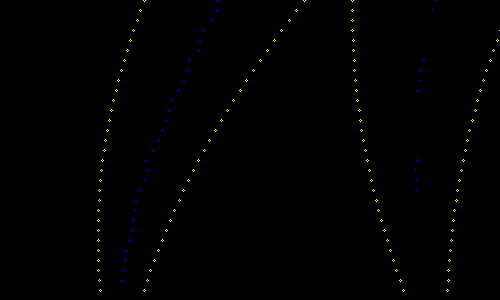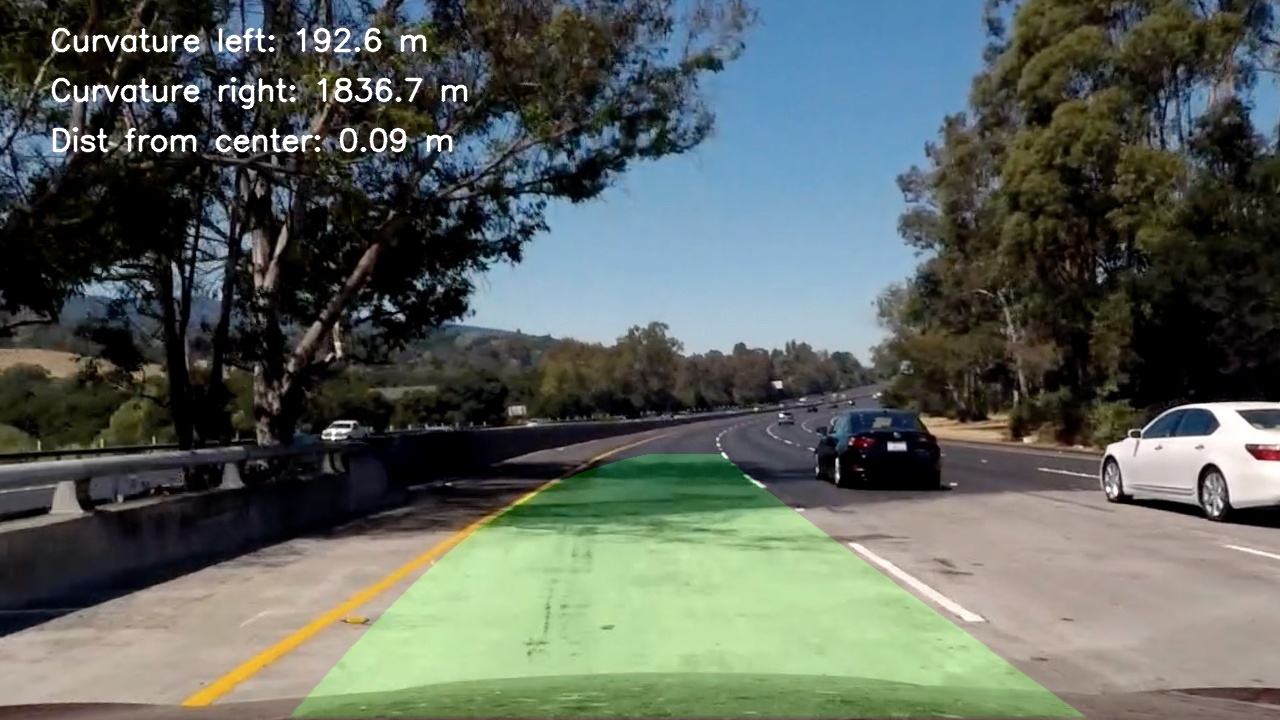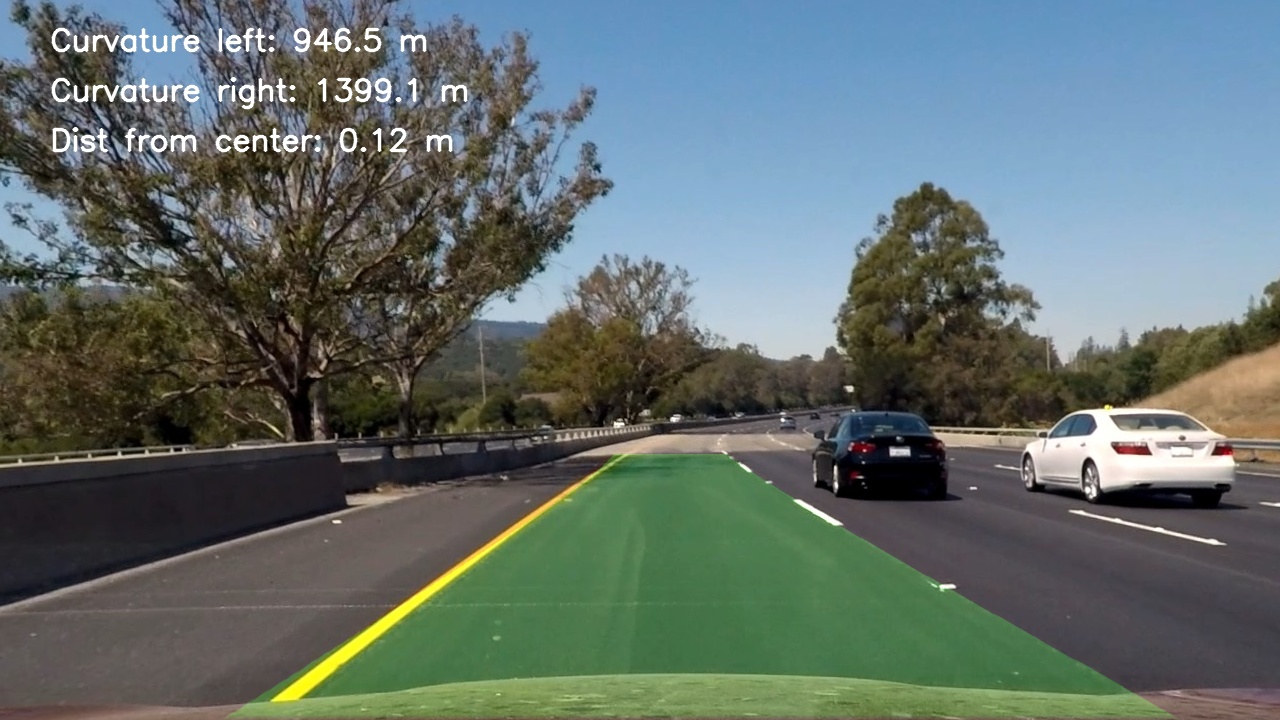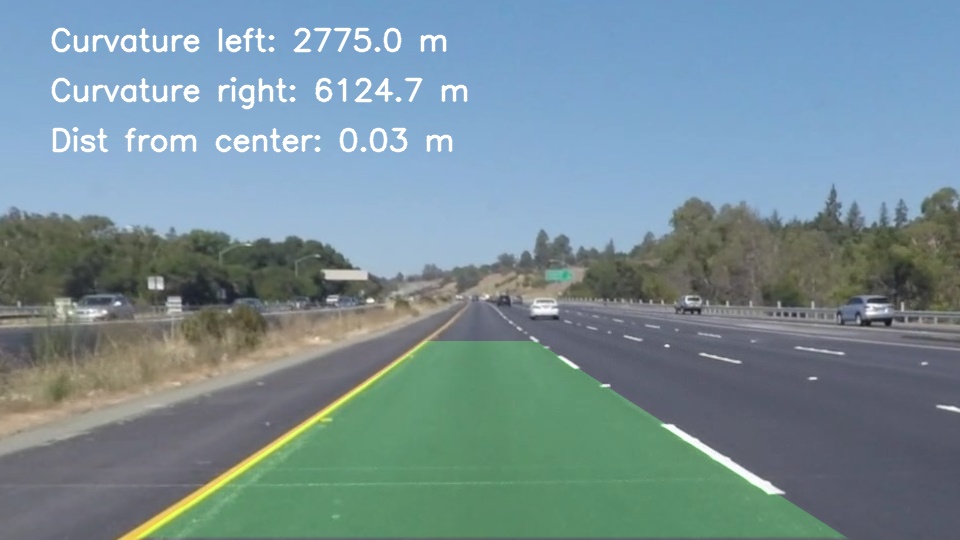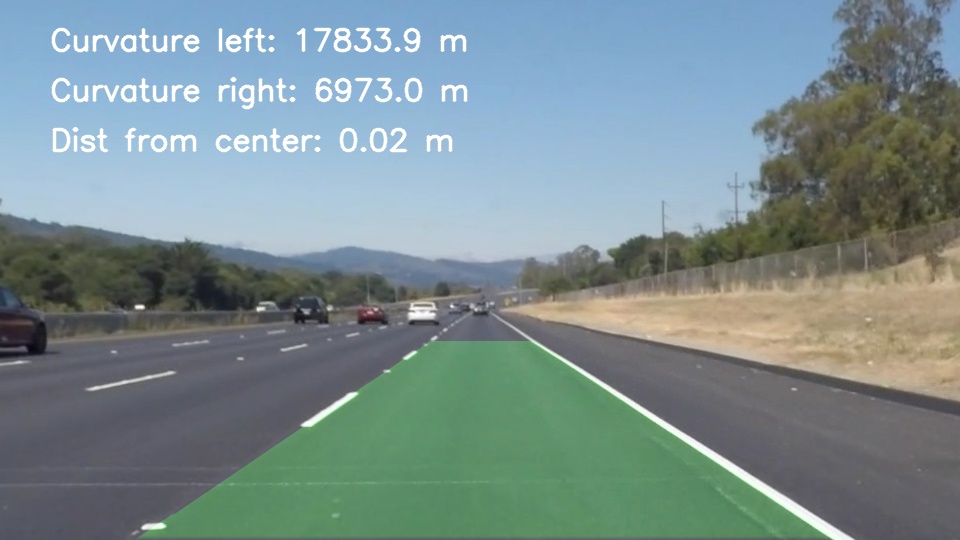Udacity Self-Driving Car Nanodegree project
Submodule from Udacity CarND-Advanced-Lane-Lines is part of this repository. No files are modified.
Scripts:
- calib.py - Camera calibration
- detect.py - script implementing detection pipeline
Camera calibration is done in calib.py. Script loads every image that match following pattern: CarND-Advanced-Lane-Lines/camera_cal/*.jpg.
Termination criteria are defined as follows.
# termination criteria
criteria = (cv2.TERM_CRITERIA_EPS + cv2.TERM_CRITERIA_MAX_ITER, 30, 0.001)
6x9 board is used. Here are prepared 3D reference coordinates and arrays to store data.
# prepare object points, like (0,0,0), (1,0,0), (2,0,0) ....,(6,5,0)
objp = np.zeros((6*9,3), np.float32)
objp[:,:2] = np.mgrid[0:9,0:6].T.reshape(-1,2)
# Arrays to store object points and image points from all the images.
objpoints = [] # 3d point in real world space
imgpoints = [] # 2d points in image plane.
Images list.
images=glob.glob('CarND-Advanced-Lane-Lines/camera_cal/*.jpg')
Iterating through the images to find chess boards on each. If found, points are added to arrays and image is shown.
for fname in images:
img = cv2.imread(fname)
gray = cv2.cvtColor(img,cv2.COLOR_BGR2GRAY)
# Find the chess board corners
ret, corners = cv2.findChessboardCorners(gray, (9,6),None)
# If found, add object points, image points (after refining them)
if ret == True:
objpoints.append(objp)
corners2 = cv2.cornerSubPix(gray,corners,(11,11),(-1,-1),criteria)
imgpoints.append(corners2)
# Draw and display the corners
img = cv2.drawChessboardCorners(img, (9,6), corners2,ret)
cv2.imshow('img',img)
cv2.waitKey(500)
Time to destroy all windows and do actual calibration.
cv2.destroyAllWindows()
ret, mtx, dist, rvecs, tvecs = cv2.calibrateCamera(objpoints, imgpoints, gray.shape[::-1],None,None)
result=dict()
result['ret']=ret
result['matrix']=np.array(mtx).tolist()
result['dist']=np.array(dist).tolist()
result['rvecs']=np.array(rvecs).tolist()
result['tvecs']=np.array(tvecs).tolist()
Saving calibration result to file.
with open('calib.json', 'w') as f:
json.dump(result, f, indent=2, sort_keys=True)
The pipeline for images or first frame of video is following:
- undistortion
- perspective transform
- binarization
- line fitting
- calculate curvature and position
For videos there is alternative line fitting step. It will be described below in line fitting section. Class LaneDetector do all the work.
Distortion is corrected using OpenCV cv2.undistort function with provided camera calibration data. Images before and after distortion correction are shown below.
Perspective transform is done using cv2.getPerspectiveTransform and cv2.warpPerspective.
Input points are defined as follows: (top left = 0,0, bottom right = 1,1)
0.16, 10.45, 0.630.55, 0.630.84, 1
 4 points used to compute transformation matrix.
4 points used to compute transformation matrix.
 Images are masked above
Images are masked above 0.63 and 10% from bottom
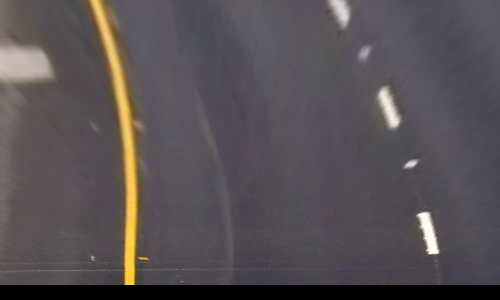 Image transformed to top view using warp perspective.
Image transformed to top view using warp perspective.
Binarization is done in following stepd:
- Blur with 5x5 kernel using
cv2.filter2D - Equalize histogram
- Convert to YUV colorspace
- Use
cv2.equalizeHistwith Y channel - Convert back to RGB
- Find white lines
- Leave only G channel
- Black all values below 250 and set rest to 255
- Find yellow lines
- Use V from YUV
- Blur with 5x5
- Apply sobel in x and threshold
- Merge results from 3 and 4
Line fitting for single image or first frame of video works as follows:
- Set
center = width/2 - For each line in image starting from bottom:
- Store index of each none zero point in
x_val_hist- Store in
x_val_histindex of each none zero point from row - If len of
x_val_histis greater than 0:- Group points to left/right line according to position to
center - If there are points in left group:
- Compute average
- Add point to points
- Set
center = average + width*0.2
- If there are points in left group:
- Compute mean
- Add point to points
- Group points to left/right line according to position to
- Store in
Image below shows red, green and blue dots. Red and blue are points for left and right line fitting respectively. Green is the position of center which discriminates left from right points.
Line fitting for a video frame:
- For every 10th row of frame starting from bottom:
- Compute min, max of ROI for x, for left and right lines to search for points (
lxmin, lxmax, rxmin, rxmax) - Store in
x_val_histindex of each none zero point from row - If len of
x_val_histis greater than 5:- Group points to left/right line according to position to
lxmin, lxmaxandrxmin, rxmax - If there are points in left group:
- Compute average
- Add point to points
- Set
center = average + width*0.2
- If there are points in left group:
- Compute mean
- Add point to points
- Group points to left/right line according to position to
If there are less than 10 points in left or right line 25 times, single image line fitting is made.
All radius/position related computations are made in computeAndShow method. Curvature is computed using code from Udacity. Position is obtained by computing the difference between center of image and center of lane in pixels. Then it is converted to meters using pixels to meters factor for x axis.
Results are saved into results directory.
Here are results on Udacity sample images.
Results for videos are also stored in results dir.
This solution works bad on harder_challenge_video.mp4. Pipeline is prepared to work on smaller curvatures. The contrast variations are really challanging and are a problem.
Improvements:
- RANSAC can be used to remove outliers to better fit polynomials.
- Deep net can be used to determine lane like for determining driveable areas of road in this paper
- Fine tunning of binarization
- Support for small radius turns - larger ROI
- Compare the change of polynomial - reduce jumps



